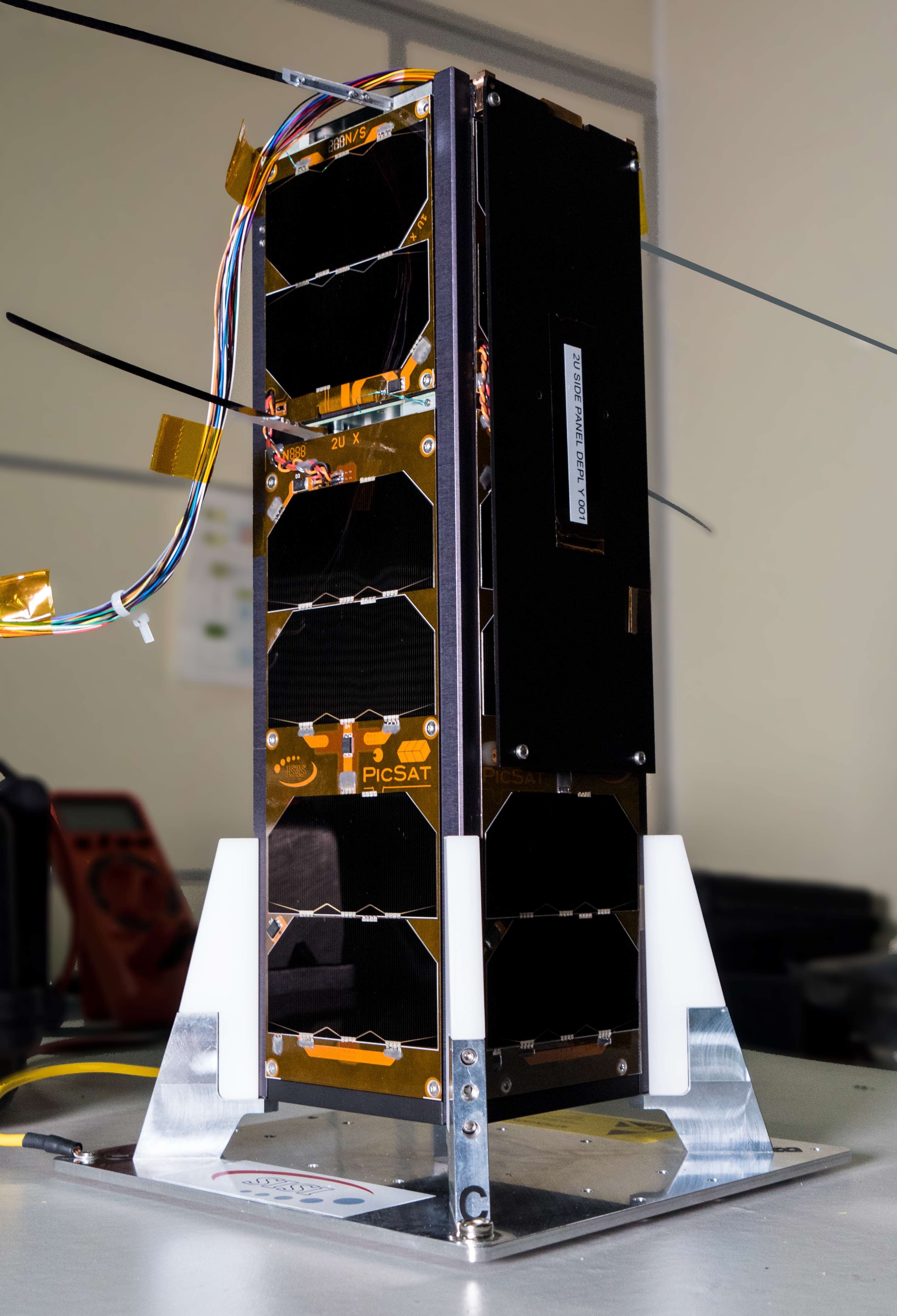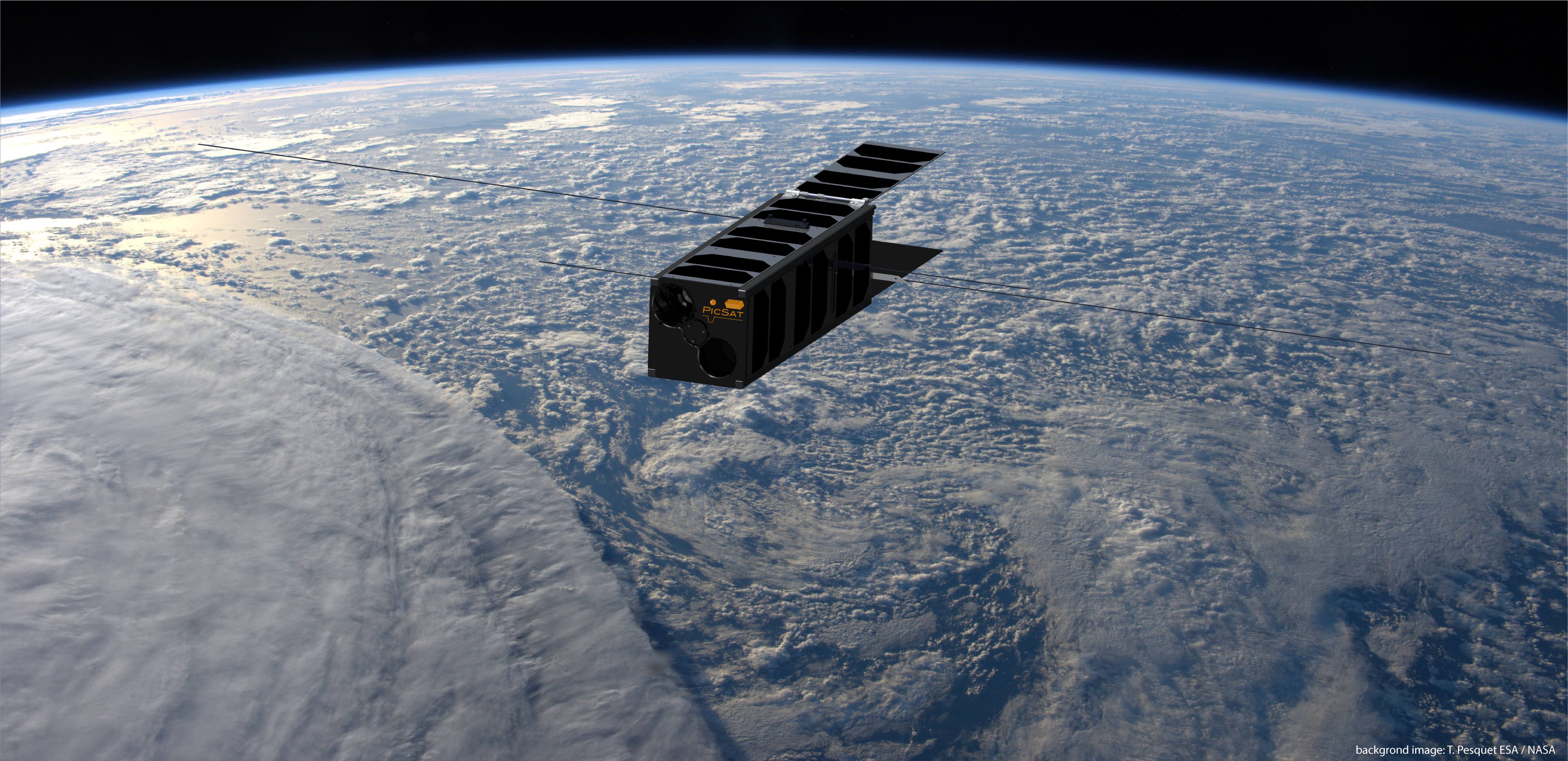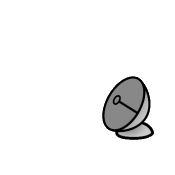
PicSat is a nano-satellite of the type CubeSat. PicSat is composed of three cubic units, called a 3U, each 10x10x10cm in size (4x4x4 inch).
The lower unit contains the electronics: the antennas, communication and navigation systems, attitude control system (ADCS), including the inertia wheels and power and batteries.
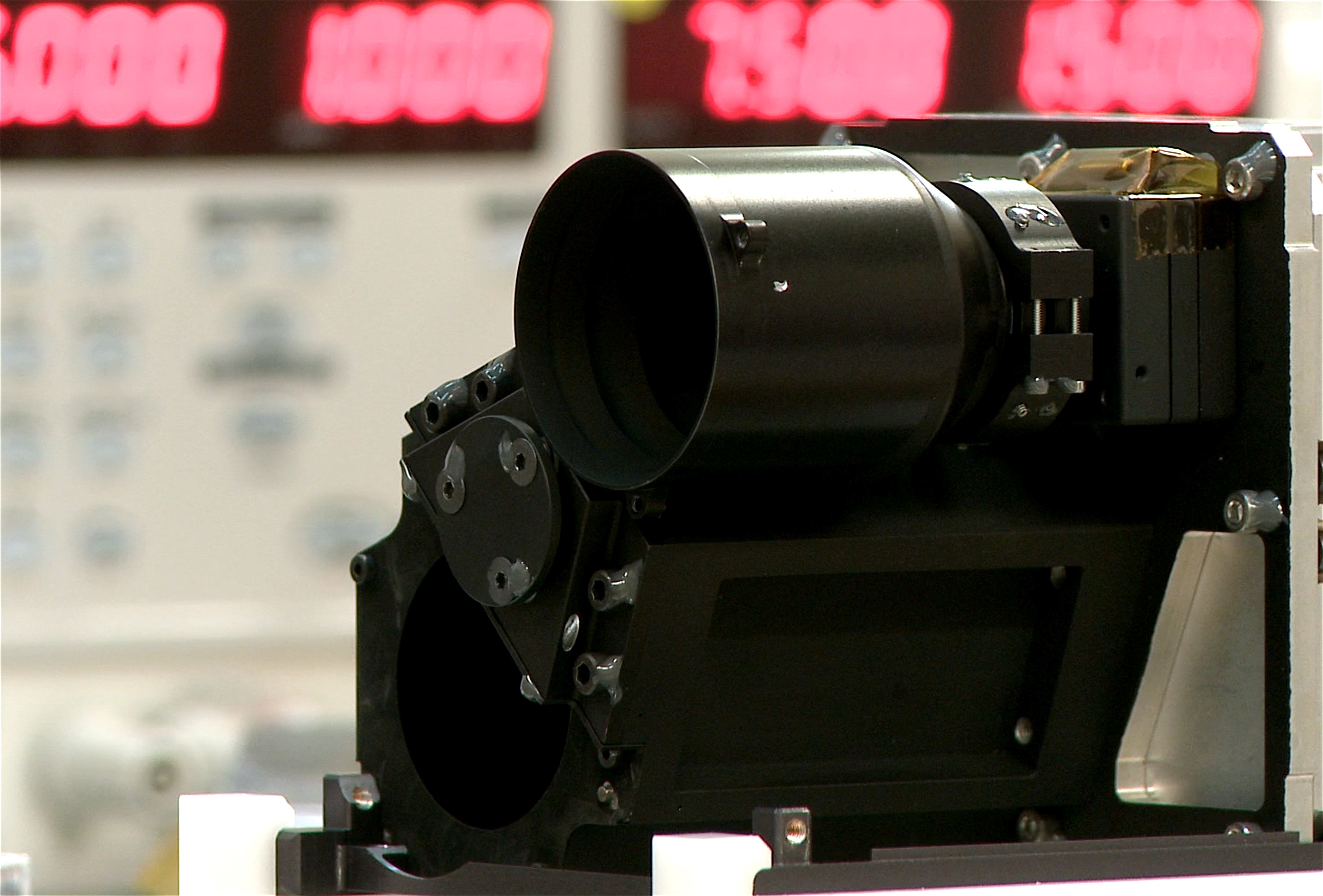
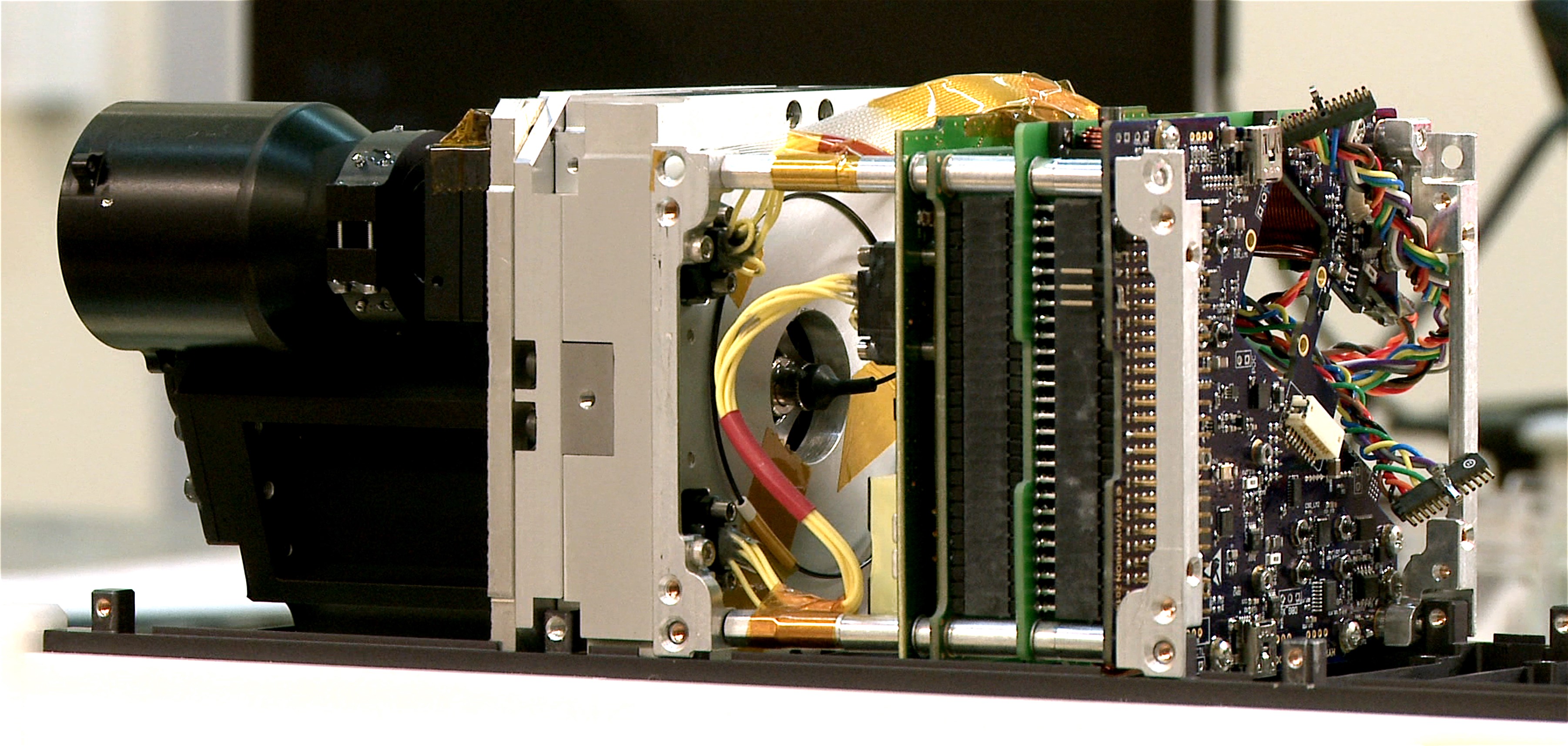
The optical fibre is connected to photodiode in the middle unit. The photodiode very accurately measures the amount of light being delivered to through the optical fibre. The middle unit also contains the payload electronics.
The whole satellite is clothed in arrays of solar panels that provide with energy for the operation of all the systems. The total weight of PicSat is about 3.5 kg and the power consumption is about 5 W, similar to an economical light bulb!
PicSat has been designed and built by our small team from the High Angular Resolution Astronomy group at the Paris Observatory / LESIA laboratory in France.
